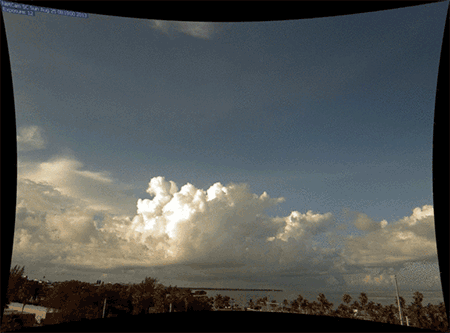Romps and Öktem, Stereo photogrammetry reveals substantial drag on cloud thermals, GRL, 2015
Paper
Description
Fast updrafts within clouds can generate hail, lightning, and tornadoes at the surface, as well as clear-air turbulence that pose hazards for aircraft aloft. Despite these important impacts of fast updrafts, there is surprisingly large uncertainty about the forces that generate these updraft speeds. For example, do these cloud updrafts experience drag? If so, what is the magnitude of the drag force?
Here, we address these questions with stereo photogrammetry, which uses two synchronized cameras to measure three-dimensional positions. In particular, we use stereo cameras to measure the sizes and speeds of cloud thermals. Since we are able to measure Lagrangian speeds (as opposed to the Eulerian speeds measured by Doppler radar), we can analyze the data using a simple momentum equation: acceleration = buoyancy - drag. It is found that a substantial amount of drag (a drag coefficient on the order of one) is needed to match both the stereo-photogrammetric data and the known buoyancy of clouds from previous in-situ measurements and large-eddy simulations. Theoretical calculations reveal that wave drag could easily be the source of this drag.
A 14-minute sequence of cloud growth as observed by the camera located at the MAST Academy in Miami, Florida.
